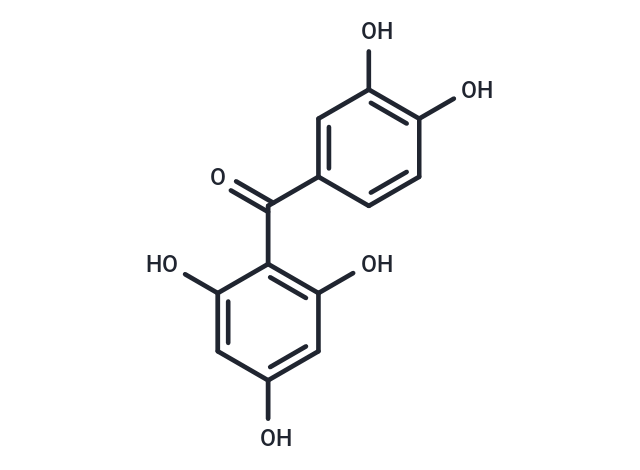Shopping Cart
- Remove All
 Your shopping cart is currently empty
Your shopping cart is currently empty

Maclurin (NSC-83240) is a phenolic component of mulberry twigs, exerts anti-metastatic effects. Maclurin effectively protects against OH-induced damages to DNA and MSCs and can be used in studies about the prevention of many diseases or MSCs transplantation.

| Pack Size | Price | Availability | Quantity |
|---|---|---|---|
| 5 mg | $50 | In Stock | |
| 10 mg | $70 | In Stock | |
| 25 mg | $114 | In Stock | |
| 50 mg | $167 | In Stock | |
| 100 mg | $248 | In Stock | |
| 1 mL x 10 mM (in DMSO) | $58 | In Stock |
| Description | Maclurin (NSC-83240) is a phenolic component of mulberry twigs, exerts anti-metastatic effects. Maclurin effectively protects against OH-induced damages to DNA and MSCs and can be used in studies about the prevention of many diseases or MSCs transplantation. |
| In vitro | Maclurin effectively protects against mesenchymal stem cells (MSCs) oxidative damage induced by hydroxyl radical (OH) at 62.1-310.5 μM. Maclurin efficiently protects DNA from OH-induced damage at 114.6-382.2 μM, and scavenge OH, DPPH, ABTS(+), and bind Cu(2+) with IC50s of 122.87, 10.15, 0.97, and 133.95 μM[1]. |
| Alias | NSC 83240, Morintannic acid, Fustic extract |
| Molecular Weight | 262.21 |
| Formula | C13H10O6 |
| Cas No. | 519-34-6 |
| Smiles | C(=O)(C1=C(O)C=C(O)C=C1O)C2=CC(O)=C(O)C=C2 |
| Relative Density. | 1.641 g/cm3 |
| Storage | keep away from direct sunlight,store under nitrogen | Powder: -20°C for 3 years | In solvent: -80°C for 1 year | Shipping with blue ice. | ||||||||||||||||||||
| Solubility Information | DMSO: 4.8 mg/mL (18.31 mM), Sonication is recommended. | ||||||||||||||||||||
Solution Preparation Table | |||||||||||||||||||||
DMSO
| |||||||||||||||||||||

Copyright © 2015-2025 TargetMol Chemicals Inc. All Rights Reserved.